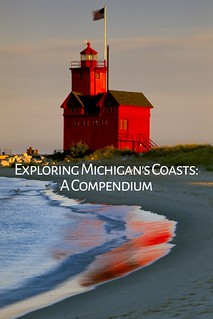Jefferson in Nîmes
There is an ancient Roman temple in southern France that Thomas Jefferson admired more than any other building of classical architecture. It has been known as Maison Carrée or Square House since the 16th century. The structure is actually shaped as a rectangle, not a square as the French word Carrée would lead you to believe. In ancient French, however, “carré’ was used to describe any geometric figure with four right angles.

The Maison Carrée began its long life 2,000 years ago in the ancient city of Nemausus (modern-day Nîmes) as a temple dedicated to the adopted sons of Emperor Augustus. At the time it stood in the forum, high on its podium at the center of the civic and religious life of the city.
In Roman times, Nîmes was strategically located at the crossroads of two major axes. At Nîmes, the Via Domitia, which led troops and traders alike from Italy to Spain, met an ancient road connecting northern Europe with the Mediterranean. The city was already thriving when Octavian (the future Emperor Augustus) decided to settle there a number of veterans who had helped him defeat Mark Antony and Cleopatra and subsequently conquer Egypt. To this day, the coat of arms for Nîmes depicts a crocodile chained to a palm tree: the former symbolizes the kingdom of Egypt that Augustus’ soldiers defeated.

Augustus equipped the Roman colony with all the amenities his retired soldiers deserved, including a remarkably well-preserved amphitheatre that is still in use, impressive fortifications (of which one watch-tower and two gates survive), and the forum itself where the Maison Carrée stood. It was during that time, too, that a splendid aqueduct was built to bring water from the springs of Uzes 20 km away. Its most famous preserved section is the admirable Pont du Gard (or “Bridge over the Gard River”) with its three elegant arcaded stories that, although assembled without mortar, have resisted the assault of time for two millennia.

In 1785, Thomas Jefferson, then American Ambassador to France in Paris, received a letter from James Buchanan and William Hay, the directors of the Virginia Board of Public Buildings, with an important request: would he provide plans for the new Capitol of Virginia? Jefferson didn’t hesitate for a moment. He chose the Maison Carrée as its model, had drawings made, hired a French architect to create a plaster model, and sent it all to Richmond.
In Jefferson’s opinion, the Maison Carrée was “one of the most beautiful, if not the most beautiful and precious morsel of architecture left us by antiquity. It (…) has the suffrage of all the judges of architecture who have seen it, as yielding to no one of the beautiful monuments of Greece, Rome, Palmyra, and Balbec, which late travellers have communicated to us. It is very simple, but it is noble beyond expression, and would have done honor to our country, as presenting to travellers a specimen of taste in our infancy, promising much for our maturer age.”

If you travel to Richmond today, you’ll notice few differences between Nîmes’ original Roman temple and its American replica. One significant change, however, is that the capitals are of the Ionic order, not the Corinthian which is characterized by its elaborate acanthus leaves that Jefferson feared Virginia workmen wouldn’t be able to carve. As for the rest, the temples are surprisingly similar. (Don’t pay too much attention to the wings flanking the edifice: they were added in 1904-1906 when the capitol had to be rebuilt after years of neglect.)
Surprisingly, Jefferson never laid eyes upon the Maison Carrée when he decided to design the Capitol of Virginia after it. He only knew the ancient temple from travelers’ descriptions and drawings. It’s only in 1787, one year after sending the plans to Virginia, that he finally made his coveted journey from Paris to southern France—not on a professional assignment, but for health reasons: he hoped that the spas of southern France would help improve his health.
When Jefferson saw the Maison Carrée for the very first time on March 20, 1787, he spent long hours gazing at it like a lover at his mistress, as he admits in a letter he wrote at the temple itself to his friend Madame la Comtesse de Tessé. Jefferson would return to America two years later, after witnessing the violent outbreak of the French Revolution. It would be ten more years before his Capitol of Virginia was completed, providing the American people with what Jefferson considered “an object and proof of national good taste” that would “improve the taste of my countrymen, increase their reputation, reconcile to them the respect of the world, and procure them its praise.”
P.S. You can read more stories about the history and culture of Europe in my free travel e-letter, The Owl. Please click here to register and access The Owl’s archives: www.ExploreTheEssentialClassics.com.
Catherine Lapp is the Classics Editor for Wandering Educators.





















Dr. Jessie Voigts
Catherine - that is so fascinating, that Jefferson drew his plans from just drawings. I am glad to learn this history - thanks!
Jessie Voigts
Publisher, wanderingeducators.com